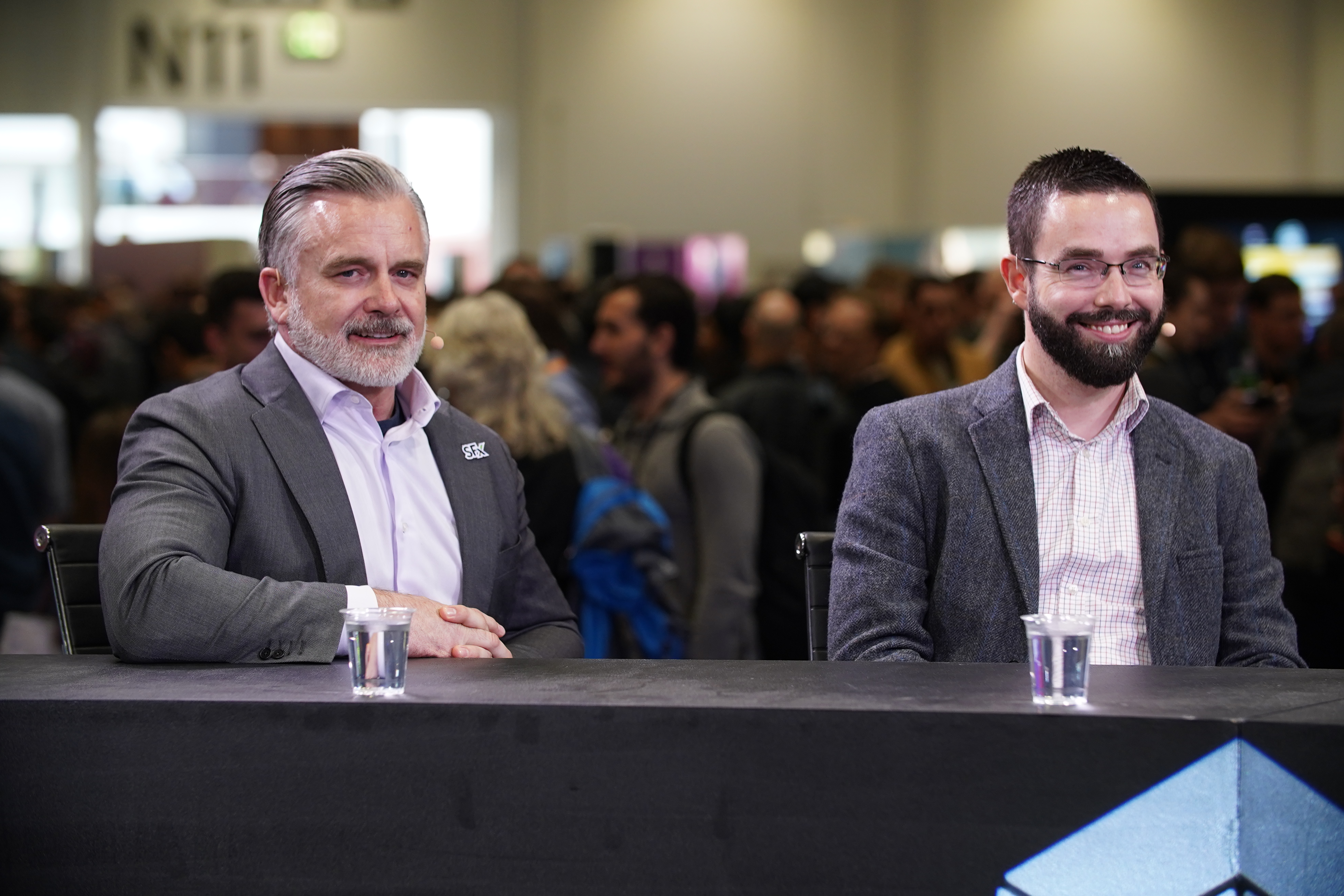 CLOUD
CLOUD
 CLOUD
CLOUD
 CLOUD
CLOUD
Worldwide, companies are no longer taking “no” for an answer when it comes to developing quick, innovative technology for the digital transformation — and the best technology companies are helping them get there by teaming up with public cloud solutions such as Amazon Web Services for a centralized portfolio of microservices to support containers, application integration and scalable infrastructure.
While some may assume the United States is leading the charge in technological innovation, the United Kingdom is proving an irrefutable influence on the cloud services industry.
“There’s a lot of great innovation all over Europe — here in the U.K., all the way up to Northern Europe … Paris, Italy,” said Mark Cranney (pictured, left), chief operating officer of SignalFx Inc. “We see it across the board.”
To talk about the cloud revolution happening across the pond, Cranney and Chris Bunch (pictured, right), head of Cloudreach, EMEA, recently spoke with Dave Vellante (@dvellante), host of theCUBE, SiliconANGLE Media’s mobile livestreaming studio, during the AWS Summit in London. They discussed the booming business of cloud services, as well as Cloudreach’s deal with SignalFx to use it’s application and infrastructure monitoring software across its portfolio for monitoring cloud-based applications (see the full interview with transcript here). (* Disclosure below.)
[Editor’s note: The following has been condensed for clarity.]
Vellante: Back in the day, the narrative was that the public cloud was going to kill every managed service provider out there. It’s been nothing but a tailwind for your business. Business is booming. What actually happened to give you that lift?
Cranney: The big trends are — the move to the cloud, number one. The second piece is just a change in the architectures. The move to Kubernetes, the introduction for elastic, bursty-type use cases of things like Lambda. And even more importantly, just the process of developing software — moving from waterfall to agile, and the whole DevOps movement, and introduction to microservices.
There are a lot of these waves that have been going on for quite some time, but they’re really starting to hit the shore right now.
Vellante: IT used to be the business of, “No. We can’t do that because … .” And now you look around this audience, it’s all doers and builders, and it’s actually great marketing because it works, doesn’t it? So, cloud-native’s been a fundamental component of that.
Bunch: Our whole business is around making information technology the enabler, helping businesses to innovate. Once upon a time, the message was all around cost saving as the reason to move to the cloud, and there’s still an element of that; nobody wants to pay more. But actually, increasingly, what we’re seeing is organizations moving to Amazon because they want the agility. They want to move faster, and they don’t want to be the culture of “no” and have a process that takes six months to deliver a new service to the business.
They want to be able to deliver things in hours, or minutes, in some cases, and they want to do so quickly. And they want to innovate at a pace that they’ve never been able to before — partly from a competitive threat perspective, and partly from a market opportunity. There’s so much that we can deliver to customers if we put our minds to it and use the primitives that Amazon provides as building blocks to enable new services.
Vellante: So what are people doing? Are they building new cloud-native apps in the public cloud? Are they doing a lift-and-shift and trying to get more agility out of those traditional apps? What’s the landscape look like?
Brown: It’s a combination of the two. The startup organizations, of course, are starting with no legacy. There’s nothing to migrate, and they are building cloud-native, and they’re doing so fast. The larger organizations, they have huge volumes of IT legacy infrastructure, some of it dating back to the ’70s in the case of financial institutions or public sector. And all of that is an opportunity to modernize — and not just for the agility and innovation, but in some cases, just to reduce risk.
There is huge business risk in these old, untouched, dusty, cobweb-ridden servers that nobody understands any more, and there’s a real opportunity to move that to the public cloud, reduce and remove that risk. And then while you’re there, take advantage of the new technologies and innovate and deliver a better service to your end consumer, whoever that may be.
Watch the complete video interview below, and be sure to check out more of SiliconANGLE’s and theCUBE’s coverage of the AWS Summit London event. (* Disclosure: TheCUBE is a paid media partner for the AWS Summit London 2019 event. Neither Amazon Web Services Inc., the sponsor for theCUBE’s event coverage, nor other sponsors have editorial control over content on theCUBE or SiliconANGLE.)
THANK YOU